Raisa Sandstrom’s initial plans for her kitchen were entirely in shades of neutral: “I was thinking of resale value and permanence, and trying to be safe,” she says. Then she shared the plans with her boss, Sybil Urmston, of Boston design firm sirTank, who suggested Raisa rethink her approach: “Sybil urged me to create something that’s me.”
That encouragement sent Raisa and her husband, Andrew Putnam, on a three-year creative journey involving 19th-century-style landscape wallpaper, heart pine paneling, torched lumber, an old post office table, orange storage cabinets, maple floorboards that they pulled out of a condemned house themselves, and so much more. They splurged on elements, such as the locally made cabinets, and paid next to nothing for others (Raisa loves old things and is an avid Facebook Marketplace shopper).
The kitchen is the center of the action in the couple’s late 1800s fixer-upper in Northampton, Massachusetts, which they bought in the summer of 2020. The two met nearby at UMass Amherst, where Raisa studied photography—she began her design journey by spending summers working at Crate & Barrel and planning her dorm rooms in exquisite detail. Andrew graduated from the university’s Stockbridge School of Agriculture with a degree in arboriculture, and is superintendent of urban forestry and landscapes for Cambridge, Massachusetts (The New York Times recently spotlighted the city’s Miyawaki tiny forest projects). He’s also handy and a problem solver, and collaborated with Raisa every step of the way.
They hired a series of contractors and finish carpenters to get the job done, but many of the details are their own hard work. And the results—both grand and whimsical, old world and of this century—depart from a lot of kitchen norms. We think there are some daring ideas here worth considering.
Photography courtesy of Raisa Sandstrom (@raison_design).
1. Formal wallpaper has a place in the kitchen.


2. When you’re designing for yourself, you can feel free to experiment.

The 8-foot table originally stood in the post office in nearby Millers Falls. Andrew spotted it in a Craig’s List ad, without photos, for $150. Part of a storage unit clean out, it came covered in wallpaper: Raisa applied two rounds of Citristrip followed by a sanding and two coats of food-safe beeswax butcher block oil to refinish it.
The countertops were a longtime open question. The couple considered concrete and soapstone before settling on honed Vermont Verde Antique (VVA) from a quarry just up I-91: “It has the look of marble and the brawn of granite,” says Raisa. “It’s used commercially around here. I love its warmth and durability, and the fact that it’s local.” Photograph by Cara Totman.
3. Modern cabinets mingle well with antiques.

The cabinets ran to about $16,000, pantry wall included, and were the biggest cost. The brass faucet is Perrin & Rowe’s Armstrong Pull-Down Bridge Faucet, approximately $1,500, and Raisa notes, pairs well with the Vintage Globe Sconces from the Netherlands, $398, and Raw Brass Outlet and Light Switch Covers on the paneled walls.
4. Reuse materials you have on hand, such as old flooring as paneling.

The Z Stools came from Central Mass Auctions—$150 for the pair including several paintings—and are sized just right to tuck under the table.

As for the floor, it’s the original rock maple (the couple pulled it up and de-nailed it themselves, and had it sanded and re-installed). Parts had been replaced by linoleum and to fill in the gaps, Raisa and Andrew spent two days with pry bars salvaging matching maple boards from a 1940s house that was being torn down. The mat under the table is an Ember Indoor/Outdoor Rug from Lulu and Georgia
5. Two wild cards that work: a mirror as a stove backsplash and a shou sugi ban range hood cover.

The 1940s painted wooden tray with the bull came from a local Savers thrift store. Raisa plans to also hang cooking tools from the paneling.

“He treated the wood before and after, with teak oil to get a good char and a rich finish, and meticulously lined it up with the backsplash,” says Raisa. “To us, it’s the star of the kitchen.” In fact, they were so happy with his results that they paneled the kitchen side exterior of the house with shou sugi ban. Read about the finish here.
That’s the dishwasher next to the hood—to make sure the cabinets don’t have to “compete with the appliances,” Raisa went with panel-ready options.
6. Interesting displays elevate a kitchen.

The windows were supplied by Harvey, a nearby New Hampshire company, and have interior pine frames.

7. The pantry can have a big presence.

The couple opened the kitchen to the dining room, which they keep clean lined, and the pantry serves as a link between the two. “If we get sick of the orange,” adds Raisa, “we can easily paint the cabinets.”
8. Kitchens are allowed to be moody.

Featured photograph by Cara Totman.
Here are three more highly personalized, labor-of-love kitchens:
- A Creative Director’s Right the Wrongs Kitchen Update in Three Stages, Budget Edition
- Colorful and Custom—with a Tight Budget and Even Tighter Footprint
- In Hastings On Hudson: A 1700s Cookspace Inspired by a Painting
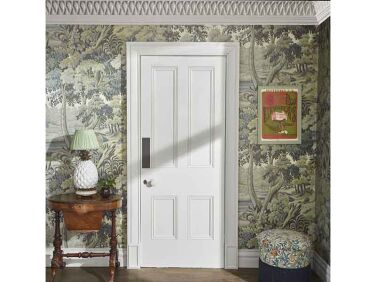

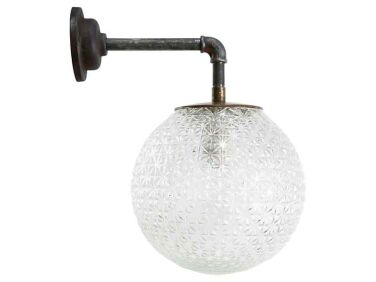
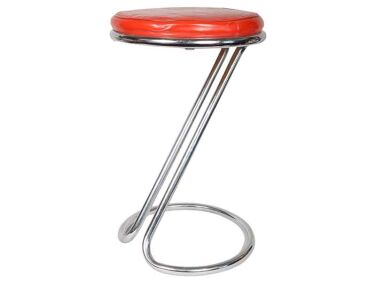
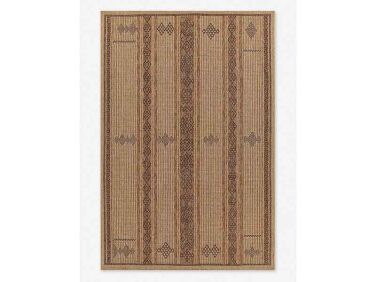


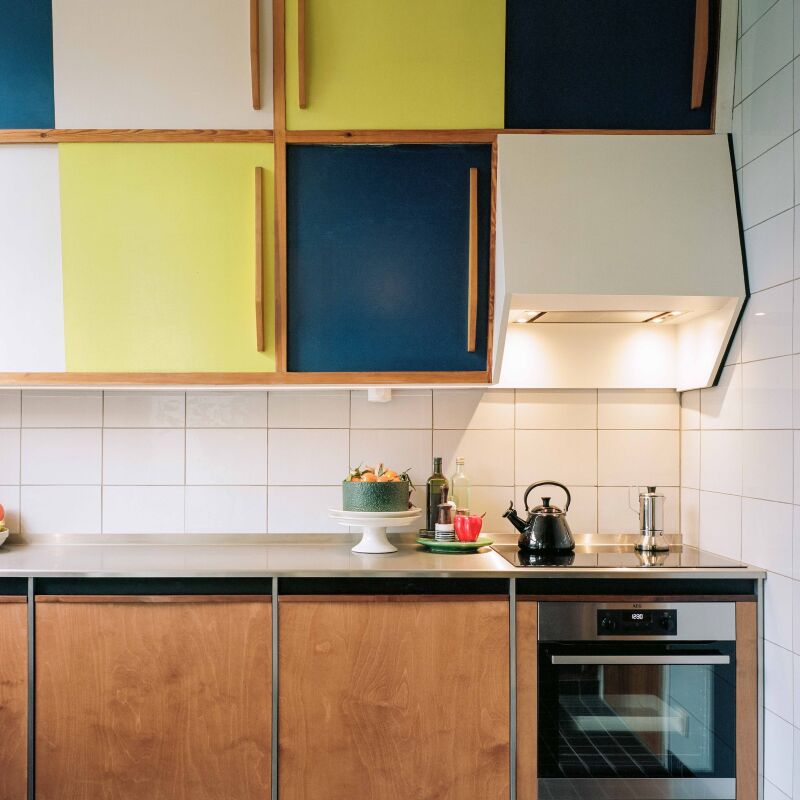
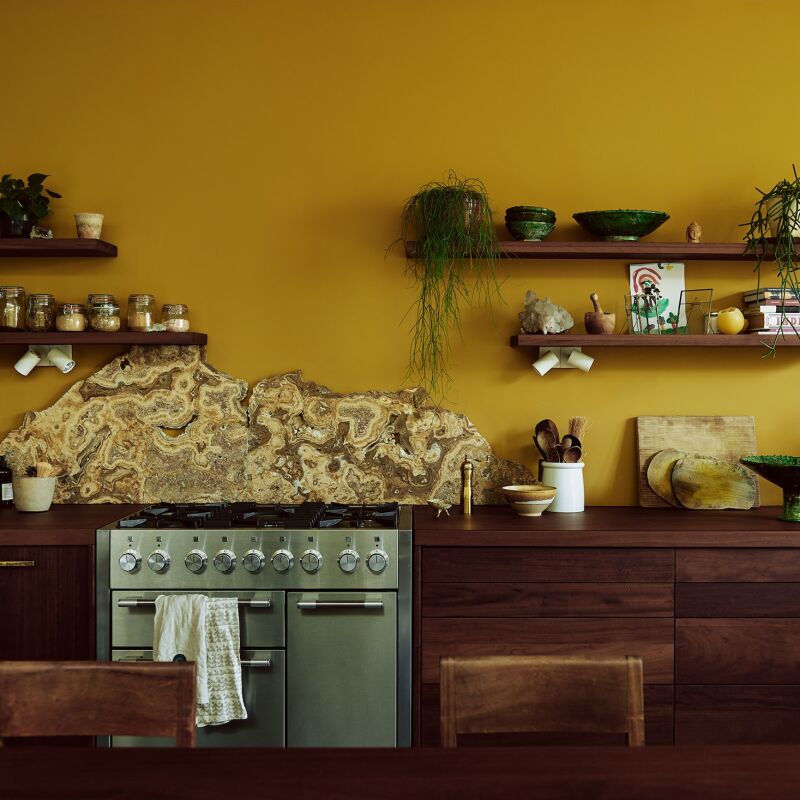
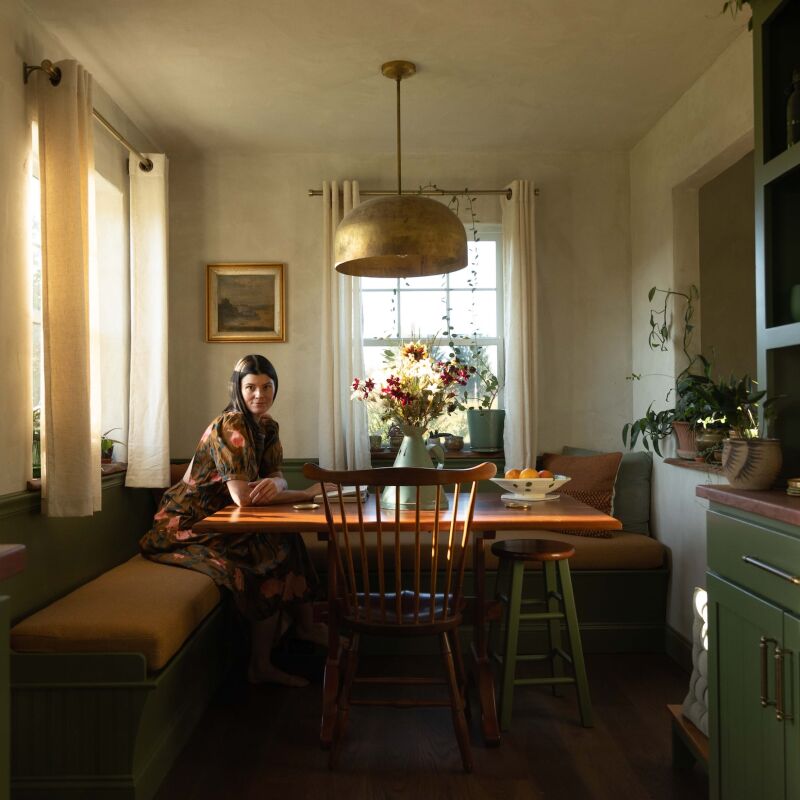



Have a Question or Comment About This Post?
Join the conversation